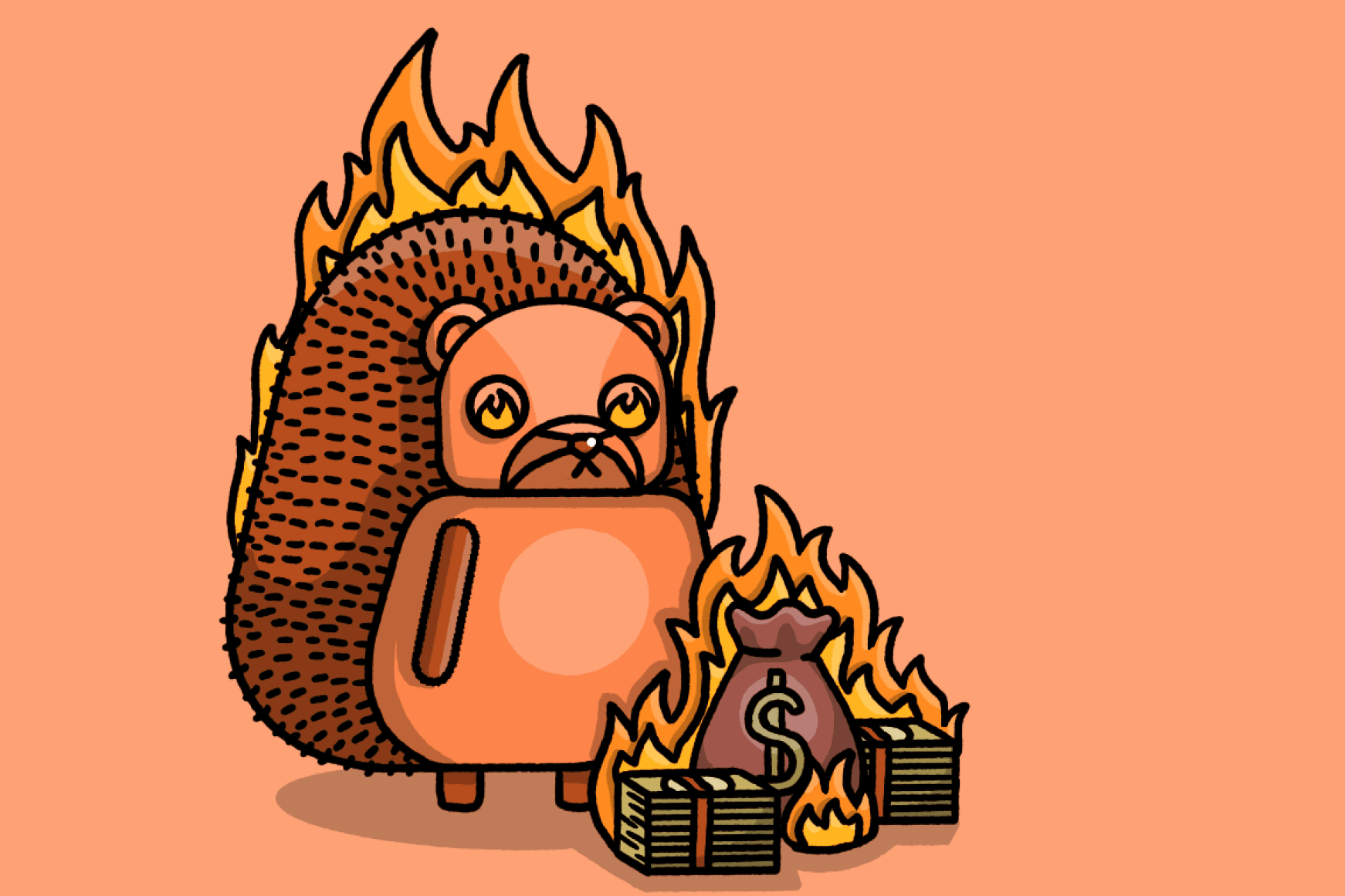How to do startup sales with no experience
Oct 31, 2024

On this page
- Problem #1 – Getting meetings
- Problem #2 – Running a sales meeting
- Be confident (even when you're not)
- Be proud of who you are
- Problem #3 – Closing a deal
- Navigating bigger businesses
- Problem #4 – Pricing
- What about sweet, sweet self-serve?
- Problem #5 – Nailing customer success
- Closing thoughts and further reading
"I just need to hire a sales person, so we get some revenue."
Let me tell you how this plays out...
The salesperson starts. They get a few meetings, but they feel pretty random. You start building stuff people talk about in the meetings. Maybe this will work?
It doesn’t. Months go by. You have no revenue. You start panicking. Is the salesperson bad, or do you lack product-market fit?
Here’s what you need to realize:
You have one job as a founder: get to product-market fit. Outsourcing your sales will make this harder. You need to be in the trenches.
You are the best salesperson for your product. There will never be anyone as well qualified to sell your product. You get the what and why behind everything.
You’re the parent of your startup. This means you can tweak things, like shipping an extra feature or changing your pricing, that a salesperson can’t.
This is written for all the founders, and aspiring founders, who are terrified of doing sales. I’ve done this as CEO of PostHog. You can do it, too.
Problem #1 – Getting meetings

This can be very challenging.
You're asking people to give up their time in the vague hope that you might solve their problem, if indeed they even have the problem you’re solving.
It's too late to tell you this, but the more helpful you've been to other people in your career, the easier you'll find this phase.
Here are some methods that worked for me in the early days of PostHog, ranked by easiest to hardest:
- Friends and family. This should be an easy win if they’re relevant!
- People you've worked with. The closer you were, the better.
- Posting on social media. Building in public works.
- Customized LinkedIn DMs. Don’t spam everyone the same message.
- Customized cold emails. Same advice.
- Posting in places our users hung out – e.g. HackerNews.
Things that didn't really work:
- Going to events. I found it awkward, but that might be a me thing.
- Automated emails or DMs. You’re trying to get just a few paying customers early on, so focus on quality instead of scale.
Be as concise as you can when asking for a meeting – 2-3 sentences, not a wall of text. Anything you do on the internet is competing with cat videos.
You should aim to respond within 30 seconds if someone messages you back – yes, it's that extreme. I ran a call center business in a past life. We had a 90% greater chance of booking time if we called back potential customers within 5 minutes.
Startups win on speed. Be glued to your messages.
Problem #2 – Running a sales meeting

Congrats. You got a meeting. What now?
First, be clear that this a sales meeting, not a product meeting:
In sales meetings, you are aiming to close down objections, and steer the customer. You learn by seeing what deals close.
In product meetings, you want to let users meander, and expand on their problems. You learn from what people are saying.
Now, let’s talk vibes.
Don't make it painful for the customer to interact with you. You are leading the meeting because you asked for it, so lead. Start with some friendly rapport, then lay out a plan for the meeting:
"Hey, so there are three things I hope to run through with you in this meeting. First, I want to get a grip on your company and priorities; second, I'd like to cover [X] problem space a bit; third, I want to talk about our product and show you a few relevant bits of it. Is that a good use of the next 25 minutes for you?
Keep the call light-hearted, be energetic and funny if you can manage it. You are talking to a human being, not a robot. Gossip about the tech industry, whatever you might have in common.
Introduce yourself properly at the start of the call:
"Hi, I'm James, I'm one of the co-founders, I'm working on [your company] because I kept seeing [the problem you’re solving] in my last company and couldn't help but to go out and solve it! I'm an engineer originally, but here I am doing sales, wish me luck."
Use your lack of sales experience as an advantage. It’s disarming to know you’re dealing with someone who isn’t a sales ninja, and people will appreciate the honesty.
Be confident (even when you're not)
Tone is almost more important than what you're saying. Everything you say and do should make the customer confident about working with you.
Answer questions directly. If you are asked something that is yes or no, start with "yes, [more context]" or "no, [more context]". If you genuinely don’t know the answer, ask a clarifying question, so you can understand better. A good follow-up question is better than a vague, hand-wavy answer.
Act like nothing is a big deal. You may feel stressed about pricing, but the customer shouldn’t. Don’t say “I’ll email you pricing”, say something like:
"This costs $X a month, but we normally do a 14-day free trial, so you can check it out first. Can I count you in?"
The prospect will feel that you’re not confident if you hide from closing the deal. Just act like you've done everything many, many times before.
Social proof helps here. You may not have any customers, but you’re hopefully talking to lots of people, so talk about your other conversations.
Use phrases like:
"People normally pick [X] because…"
"I'd recommend you start with [Y] because..."
"I bet you have an issue with [X] in your org, is it a priority for you?”
"Many customers I talk to find [Y] painful."
Be proud of who you are
When you're tiny, it can feel like you have no hope. You're maybe one or two people up against unicorn companies, why would anyone pick your product that even you don't have complete confidence in yet?
Well, there are many good reasons.
It's cool to meet the person that built the actual product. This makes you an interesting person to talk to. You can explain authentically why you thought your product was worth building, and why you're excited about it.
Be honest about what you do and don’t know, too. If you've never had a single call before, own that:
"Hey, I'm building this thing, you are literally the first person I've ever talked to about it, so would you mind going gently?"
Finally, remember these sales call dos and don’ts:
❌ Don’t lie or pretend to be bigger than you are. Customers are as smart as you and will see through it.
✅ Do ask permission to ask questions. It'll feel less awkward when you do. “Can I ask you a question about [X]?”
❌ Don’t go straight into a demo. It’s easier, but you'll leave having no real idea why they don't move forward, or return your calls. Ask about their business, their problems, and why they took the call in the first place – see my earlier example.
✅ Do include everyone in the discussion. You need everyone to advocate for you, not just the CEO, or the decision maker. Ask questions to specific people in the call; make sure everyone gets a chance to talk and ask questions.
❌ Don’t invite your co-founder. You need a relationship to close deals, and it’s harder to develop one when you're doubled up. Introduce others later as you see fit, but you need to quarterback things.

Subscribe to our newsletter
Product for Engineers
Become a better engineer and build successful products. Read by 25k founders and engineers.
We'll share your email with Substack
Problem #3 – Closing a deal

Start by working backwards. Ask the customer something like:
"So, what are all the steps needed to get you up and running as a customer?
Get them to go into detail. Do they actually have the budget, or do they need to get it? If they need to get it, who do they get it from? Could you run a demo for them?
If you’re selling to businesses, it’s likely multiple people will need to say yes.
You’re the quarterback of the deal and, just like a quarterback, building relationships with everyone involved dramatically increases your chances of completing.
Being single-threaded into the customer leads to two potential failure modes here:
- Your stakeholder may love you, but someone internal quickly “no, buts” the deal without considering it.
- Your stakeholder may be unreliable, or acting more interested than they really are out of kindness.
If you can, figure out when more people need to get involved:
"Hey, we could start at just $100 per month, is this a decision you can take on your own? Does your buying process change depending on the value?"
Our first enterprise customer at PostHog miraculously started just under the budget at which more stakeholders needed to get involved in the deal!
Navigating bigger businesses
Use group and individual dynamics to get all stakeholders bought into bigger deals.
Do this by suggesting breakout calls based on people's roles. For example, if there is an info security person on the call, follow up with them directly with anything they need. Likewise, an engineer may need a call about implementation to feel comfortable.
How do you figure out who needs to be involved? Work backwards from signature and make a list of everyone who needs to say yes.
Get your internal champion to help you with this. It’s possible they won’t know, so you can coach them through the process of getting what they want, too.1
If you’re struggling to close deals:
Develop an ideal customer profile, so you avoid selling to people who will never buy. This will evolve over time until you figure what/who works. This is one of the most important things we’ve done.
Verify if you actually have product-market fit. Pay attention to what people say in calls. Are you really solving their problem? If you’re unsure, read The Product-Market Fit Game.
Check your pricing makes sense...
Problem #4 – Pricing

What you charge makes a material difference to how the sale goes. Roughly speaking, I’d break things down like this:2
- 😎 Up to $5k per year – Below the amount anyone cares about
- 😁 $5k-$10k per year – Something one person can buy
- 🙌 $10k-$30k per year – Something two or three people can buy
- 😳 $30K-$100K+ per year – Quite hard to move forward
- 🫠 $500K+ per year – Very hard to move forward
Think about your product strategy and what your pricing says about it. Is your product a one-person buy? If not, what teams and people will be involved?
Charging too little can be a problem, too. It feels weird to pay just $10 per month for a product that could dramatically help a large company – it might signal your product won’t solve their problem. Get your pricing in an appropriate ballpark.
If you’re a product-led company – i.e. you have people coming inbound, and you believe that this is your future too – then your pricing model should get out of the way of adoption, so don't "price to value".3
Otherwise, I suggest you start by charging close to how your competitors charge, then going from there. If you have no competitors, you should experiment with wildly different pricing to make sure you don't undercharge by 100x, for example.
Think about your pricing model, too. Pricing isn’t just how much you charge, but how you do it. Sometimes price isn’t the issue, it's the perceived risk of moving forward. You can offer things like a free trial or usage-based pricing to counter this concern.
What about sweet, sweet self-serve?
The developer's dream – ship it, build pricing and a payment flow, and let people buy.
This works incredibly well for PostHog now, but it wasn’t necessary in the early days. In fact, it would have made finding product-market fit more difficult because:
Feedback from calls helped us nail our pricing.
We learned about objections that people told us on calls.
Customers wouldn’t have shared problems they had because we didn’t have a direct relationship with them, leading to slower progress and / or higher churn.
So, even if you think you’ll be product-led eventually, it may be better to start with a sales-led motion, so you can learn more about your early prospects.
Problem #5 – Nailing customer success

This is where the real work starts.
Looking after your existing customers should be your number one priority. Delight them and they'll bring you more customers.
Have clear responsibilities for existing customers. In PostHog’s early days, I was solely focused on bringing people in, and my co-founder Tim took responsibility for looking after them once I’d sold them.4
Keep communication as open as possible and be ultra-responsive. You should aim to respond within minutes, not hours or, god forbid, days. Slow responses will make people think you’re non-serious and unlikely to succeed.
In short, every interaction matters. You want customers to tell you about a problem before they churn, and ideally give you a chance to clarify what you should build next. This only happens if your interactions give them confidence you’ll get stuff done.
A private Slack channel is great for this. Customers can easily add their team, and you can DM individuals, or the whole group. People tend to share easily on Slack because they’re on it all day, whereas people love ignoring emails. Depending on your audience, Discord might work too, though it’s less common within larger companies.
Closing thoughts and further reading
I wrote this guide because many founders I talk to are daunted by selling. To conclude, I want you to remember these three inescapable truths:
- Most deals will not close. Resilience and persistence are mandatory.
- Losing time to people who will never buy is the main way you will fail.
- Someone with less context and motivation won’t figure it out for you.
I hope this guide will help you. I haven’t covered every possible scenario, but I’ll do my best to answer your questions in the comments.
If you found this useful, you might enjoy the following as well:
The Product-Market Fit Game – This is my “ultimate guide” to finding PMF. I break the problem down to 5 levels you need to clear. Selling to your first 5 reference customers is the final one.
How not to be boring – There’s no excuse for building a startup with a boring brand. This covers how we think about brand at PostHog.
How first-time founders fail – Lessons from successful founders, including Paul Copplestone from Supabase, about how they failed at first attempts.
How we got our first 1,000 users – A deeper look back at the first six months of PostHog and how we went from 0 to 1,000 users.
Words by James Hawkins, who forbids pineapple on pizza in his home.
- Leon and Charles wrote a guide on how to buy software at an enterprise company during a recent PostHog sales team offsite. Sometimes half the battle is training your champion to navigate their own organization. This guide should help you with that.↩
- Sometimes it makes sense to launch a product for free, but for this guide I’m going assume you are trying to validate product-market fit and thus are trying to charge.↩
- Pricing to value means charging the maximum you think you can get away with based on the value customers derive from your product. This only makes sense if you’re in a non-competitive market, have a strong moat (unlikely if you’re a startup), and you’re comfortable with competitors undercutting you. At PostHog, we deliberately avoid this because we’re product-led and we want as little friction as possible. In fact, we actively work towards cutting prices – we’ve cut prices for analytics and session replay recently – and give customers the option to set billing limits to avoid surprise bills.↩
- This was the setup in the early days. Now, PostHog is entirely inbound – i.e. we do no outbound sales – and we’ve since built a sales and customer success team. Our golden rule is the person who closes a deal also manages that relationship long term, rather than handing them off to a dedicated customer success team.↩
